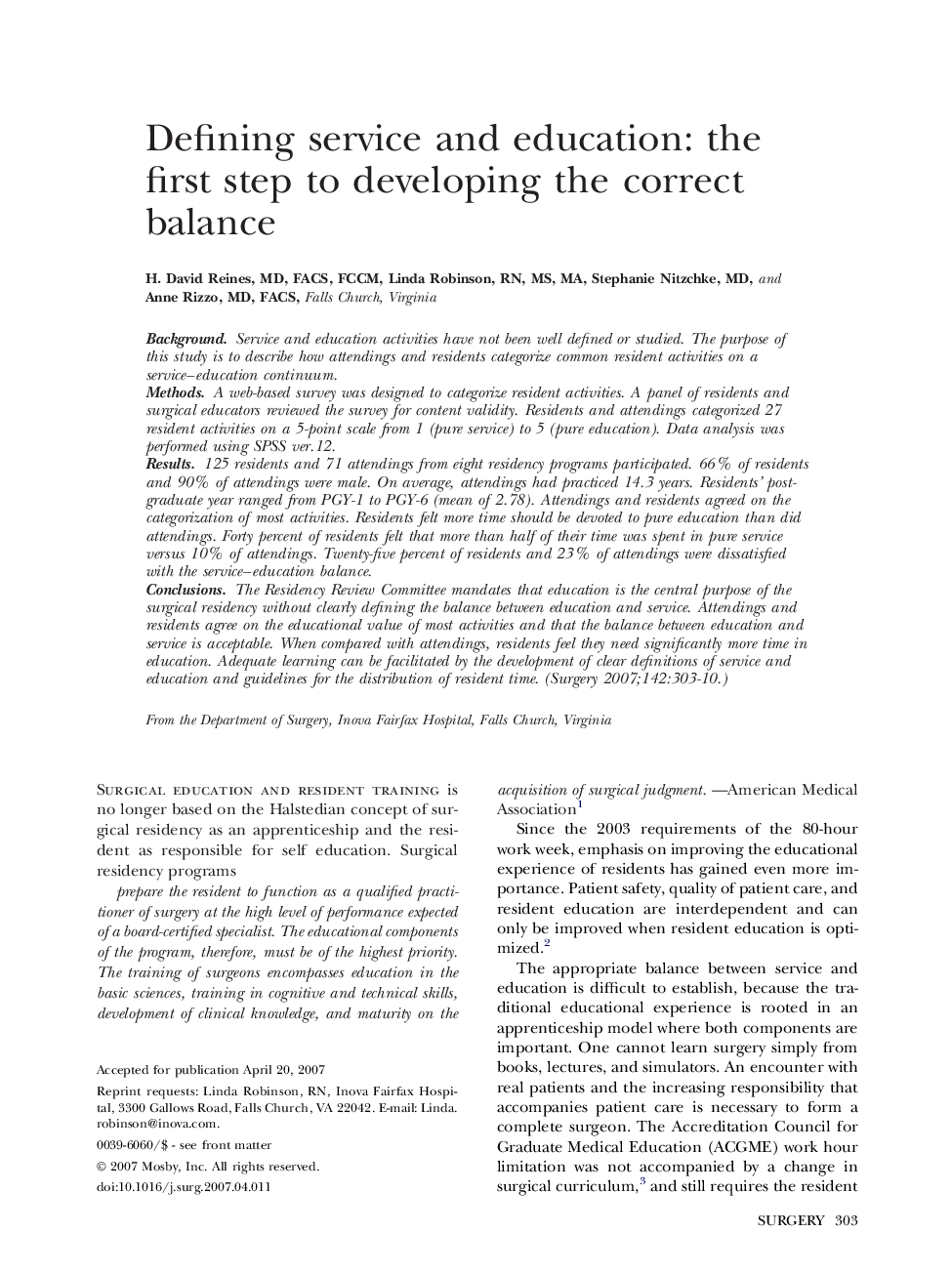| Article ID | Journal | Published Year | Pages | File Type |
|---|---|---|---|---|
| 4310345 | Surgery | 2007 | 8 Pages |
BackgroundService and education activities have not been well defined or studied. The purpose of this study is to describe how attendings and residents categorize common resident activities on a service–education continuum.MethodsA web-based survey was designed to categorize resident activities. A panel of residents and surgical educators reviewed the survey for content validity. Residents and attendings categorized 27 resident activities on a 5-point scale from 1 (pure service) to 5 (pure education). Data analysis was performed using SPSS ver.12.Results125 residents and 71 attendings from eight residency programs participated. 66% of residents and 90% of attendings were male. On average, attendings had practiced 14.3 years. Residents’ post-graduate year ranged from PGY-1 to PGY-6 (mean of 2.78). Attendings and residents agreed on the categorization of most activities. Residents felt more time should be devoted to pure education than did attendings. Forty percent of residents felt that more than half of their time was spent in pure service versus 10% of attendings. Twenty-five percent of residents and 23% of attendings were dissatisfied with the service–education balance.ConclusionsThe Residency Review Committee mandates that education is the central purpose of the surgical residency without clearly defining the balance between education and service. Attendings and residents agree on the educational value of most activities and that the balance between education and service is acceptable. When compared with attendings, residents feel they need significantly more time in education. Adequate learning can be facilitated by the development of clear definitions of service and education and guidelines for the distribution of resident time.
